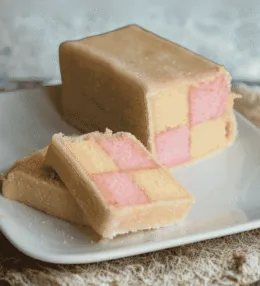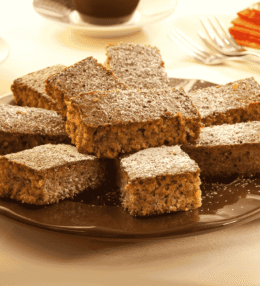
- View
Table of Contents
ToggleMochi, Japan’s beloved rice cake, is a cultural icon that bridges tradition and modernity. Whether enjoyed during celebrations, paired with tea, or filled with sweet or savoury flavours, mochi embodies simplicity in its ingredients yet offers a texture and taste that’s anything but ordinary.
Its soft, chewy consistency combined with various fillings and toppings make mochi a versatile and cherished part of Japanese cuisine.
Want to dive deeper into Japanese Cuisine? Don’t miss our post on 26 Traditional Japanese Foods to Try
What Is Mochi?
Mochi is a type of Japanese rice cake made from glutinous rice, which is steamed and pounded into a sticky, smooth dough.
This simple base can be shaped into round cakes and served plain, or it can be transformed into a more complex dessert by adding fillings such as sweet red bean paste (anko), fresh fruits, or even ice cream.
In its purest form, mochi has a mildly sweet flavour with a soft, chewy texture that’s both satisfying and unique. Mochi is often associated with celebrations, particularly during the Japanese New Year, when it’s a central part of the traditional festivities.
However, it’s enjoyed throughout the year in various forms, from simple, unadorned cakes to more elaborate varieties like Daifuku, where mochi is wrapped around sweet fillings.
The adaptability of mochi makes it a popular treat across Japan and beyond, with many variations that cater to both traditional tastes and modern innovations.
Ingredients and Taste
The core ingredient in mochi is glutinous rice, also known as mochigome. The rice is soaked, steamed, and then pounded into a smooth, elastic dough. This labour-intensive process gives mochi its signature chewy texture. While the rice itself is naturally mildly sweet, additional flavourings or coatings are often added.
Common accompaniments include a dusting of kinako (roasted soybean flour) or a sweet syrup made from soy sauce and sugar. Mochi’s taste can vary depending on its preparation. When served plain, it has a gentle, slightly sweet flavour that pairs well with green tea or other subtle flavours.
When filled with ingredients like sweet red bean paste, the contrast between the chewy outer layer and the smooth, sweet filling creates a delightful balance of textures and flavours. Mochi can also take on a more modern twist when filled with ice cream, offering a cool, creamy contrast to its chewy exterior.
A Taste of History
Mochi’s history in Japan dates back over a thousand years, and its origins are deeply rooted in religious and cultural practices. Traditionally, mochi was considered a sacred food, believed to house the spirit of rice, an important symbol of fertility and prosperity in Japan.
The ritual of making mochi, known as mochitsuki, involves pounding steamed glutinous rice with wooden mallets in a rhythmic, communal process.
This ceremony is often performed during the New Year to usher in good fortune for the coming year. Over time, mochi became more widely consumed beyond its ceremonial roots, evolving into the beloved treat it is today.
While still a central part of New Year’s celebrations, mochi is now enjoyed throughout the year in various forms, from traditional plain cakes to more modern versions filled with ice cream or flavoured with matcha.
Its versatility has allowed it to remain a staple of Japanese cuisine while also finding new fans globally.

Mochi (Japanese Rice Cake)
Ingredients
- 2 cups glutinous rice flour also called mochiko
- 1 cup water
- 1/2 cup sugar optional for sweet mochi
- Corn starch or potato starch for dusting
Instructions
- To begin, preheat your oven to 175°C (350°F) if you are using the baking method. Alternatively, prepare a steamer for traditional steaming. In a large bowl, combine the glutinous rice flour and water. Stir the mixture until smooth, ensuring no lumps remain.
- If making sweet mochi, gradually add the sugar to the rice flour mixture and continue stirring until the sugar is fully dissolved. Adjust sweetness according to preference. For savoury or plain mochi, skip this step.
- For the baking method, transfer the mochi mixture into a greased oven-safe dish. If steaming, pour the mixture into a heatproof dish that fits into your steamer. Cover the dish tightly with foil to prevent excess moisture from dripping into the batter.
- If using an oven, bake the mochi mixture for 25-30 minutes until it becomes firm and slightly translucent. For steaming, place the dish in the steamer and steam for 20-25 minutes until the mixture sets and becomes smooth.
- Once cooked, carefully remove the dish from the oven or steamer. Allow the mochi to cool for 5-10 minutes so it is easier to handle. The texture should be stretchy and sticky but manageable.
- Dust your work surface and hands generously with corn starch or potato starch to prevent sticking. Using a spatula, scoop the cooked mochi onto the dusted surface.
- Cut the mochi into small, bite sized pieces. You can roll the pieces into balls or leave them in their traditional square shape. For added flavour, you can fill the mochi with red bean paste, sweetened fruit, or any other fillings of your choice.
- Serve the mochi immediately while fresh and soft. To enhance the experience, dust the pieces lightly with additional starch and pair with green tea. Mochi can be enjoyed plain or with fillings, and it's best served fresh but can be stored in an airtight container for up to a day.






